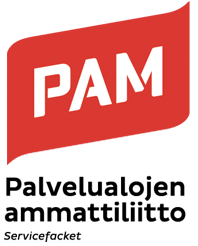Digitalisation is creeping into the hygiene sector and is changing the way cleaners work – for the better, according to an expert
Digitalisation and robots are making work in the hygiene sector more demanding, meaningful and better-paid, says the advisory organisation’s Per-Olof Ekström.
If you thought the cleaning sector was the last bastion where workers don’t need to use electronic applications, you’ll find you are wrong. For cleaners, a smartphone is now one of the most important pieces of equipment, using it to report what their work. In future maybe also a robot that they will program.
This is familiar to Per-Olof Ekström, the executive director of SSTL Puhtausala. Among other things, this independent advisory organisation provides training and aims to raise appreciation of the cleaning sector. The organisation brings together people, companies and entities in the sector.
In his office, Ekström shakes his head. He regrets that digitalisation is spreading slowly in the sector. For example, robots have been deployed more slowly than was thought.
Employees may be concerned that digital applications will further increase the pace of work, but Ekström firmly believes that in future work in the cleaning sector will be more attractive, demanding and better-paid than at present. So what lies ahead?
Only dirty floors will be cleaned
In Ekström’s view, the cleaning sector will move from pre-determined cleaning schedules at present to needs-based cleaning. In the retail sector there are already applications using sensors to automatically log footfall and customers’ routes in stores. In future cleaning needs will be estimated depending on customer numbers.
“Cleaners won’t do their rounds according to a schedule, but when the floor is dirty enough”, says Ekström, describing the changes ahead.
Sensors are already being used to monitor how many hand towels are being used. A cleaner is alerted by a beep in their pocket to change the towel roll in a smart toilet. Although rare for now, Ekström sees this technology spreading, like other computer applications. Cleaners will check the floorplan of a location on their phone and see what needs to be done that day. In hotels cleaners will get real-time information from the reception clerk on an app, but they will also be able to tell the site manager if something needs fixing in a room.
Nowadays cleaners send their superiors photos of special situations needing more thorough cleaning.
“In future they might also record a voice message, possibly in English. Speech will be automatically converted into text, transferred to a cloud service and directly to the customer’s invoicing data”, Ekström enthuses, drawing a curve with his hand.
In practice digitalisation of cleaning work means that work-related data will migrate from cleaners’ heads and from supervisors’ files to electronic systems. Real-time data on work done will be sent to colleague and employers −and in future possibly increasingly also to customers and users of premises.

Robots getting cheaper and more common
A lot more will be going online, like employees’ induction and training. Cleaning assignments will also be online, without the buyer and seller having to meet. This has become more accepted this spring, for some reason.
People use robot vacuum cleaners in their homes, but professional robots are only just coming into the cleaning sector at scale. Ekström predicts that the price of robots will come down and the fact that robots don’t like thresholds and tight corners will be factored into office design.
“The use of cleaning robots has been held back in the same way as self-driving cars: roads are not the same, nor are premises”, Ekström says.
The size of professional robots varies from devices the size of home vacuum cleaners to sit-on combination machines.
“In warehouses robot can clean the floor at night, but in supermarkets that are open all day they will only work when they are smarter and don’t look like something that turns customers off.”
According to Ekström, another factor holding back the deployment of new technology is that tight bidding procedures discourage under-capitalised operators from investing and trying out new things.
“Cleaning work will become more demanding than work in industry"
According to Ekström, digital innovations will increase work productivity and cost-efficiency, but he also believes that work motivation will improve, because true cleaning needs will be assessed better. Pay will also improve:
“In future cleaning work will be much more demanding than work in industry. I think that with new demands in the job, like IT devices and robotics, using unskilled labour will become less likely.”
“Employers will need to train and hold on to skilled employees, and this usually requires job satisfaction, appreciation and financial compensation.”
Taking breaks is part of the job, but sometimes schedules are tight. Should cleaners also get a beep in their pocket if they forget to take a break during their shift?
”They should”, Ekström replies.
Smartphone as a reporting tool
Communications and reporting work are a big part of the digitalisation of cleaning work.
We have provided all our cleaners with smartphones for work. Shift planners enter shifts and holidays in the app. Employees enter the times they arrive and leave a site for the company’s internal use, and whether they did regular cleaning or specific tasks like cleaning windows. Employees also log their breaks during the day. Employees are given app-based induction. The material is stored, and you can come back to it whenever you want. Recently our workers have also had Teams meetings on their smartphones. This practice is mostly down to coronavirus.
Use of cleaning robots has advanced. For example, Ilona, a robot that started work in the Sello shopping centre in Espoo in 2016, is still cleaning there. It has to be said, however, that although various robots are in use at sites they are still not all that widespread.




